Is It Bad to Wear Headphones to Sleep?
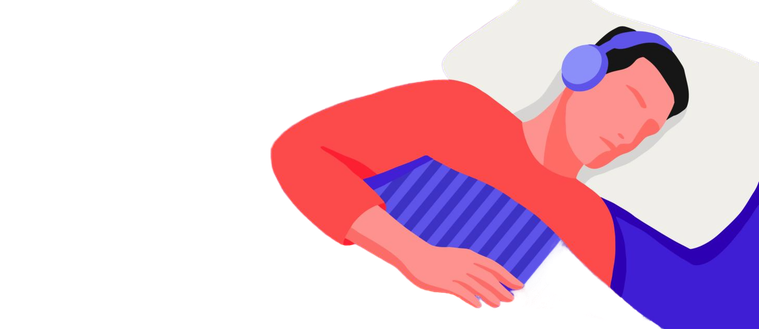
If there's one culprit that messes with your sleep quality, it's anxiety. When your thoughts are racing and you can’t stop overthinking, falling asleep will be a challenge.
Music or sleep-inducing noise is one solution. The link between sound and sleep goes two ways. Disruptive external sounds, such as traffic or construction work, can damage hearing and harm sleep. Meanwhile, brown and white noise, or soothing music, can calm anxiety.
Listening to certain types of noise and music helps you slumber by relaxing the mind and masking external noise. For many, it's a pre-bedtime relaxation technique, while others prefer to listen all night long.
If you're considering sleeping with headphones, it's essential to know the dangers and the safest kind to use.
Key Takeaways
-
Sleeping with headphones offers benefits like easing anxiety and promoting relaxation. However, it also comes with potential risks, such as ear infections, hearing damage and safety hazards.
-
Keeping the volume low is very important when sleeping with headphones. It shouldn’t exceed 70 decibels.
-
Choosing the right headphones will ensure you sleep both safely and soundly. Headband-style headphones and sleep masks with ultra-thin speakers are the safer and most comfortable option.
Table of Contents
Is It Bad to Sleep With Headphones?
No, sleeping with headphones isn’t necessarily bad, as long as you keep the volume low and ensure they aren’t causing any discomfort. There are, however, some potential risks you should be aware of.
Let’s explore the potential benefits of going to bed with headphones first:
-
Masking disruptive environmental sounds (such as traffic) with white noise or other types of colored noise
-
Easing stress and anxiety with sleep sounds, ASMR or music to help you fall asleep faster
-
Listening to guided meditation or sleep stories
Different Types of Headphones
Before we dive into the risks, let's look at the kinds of headphones available.
Over-ear Headphones
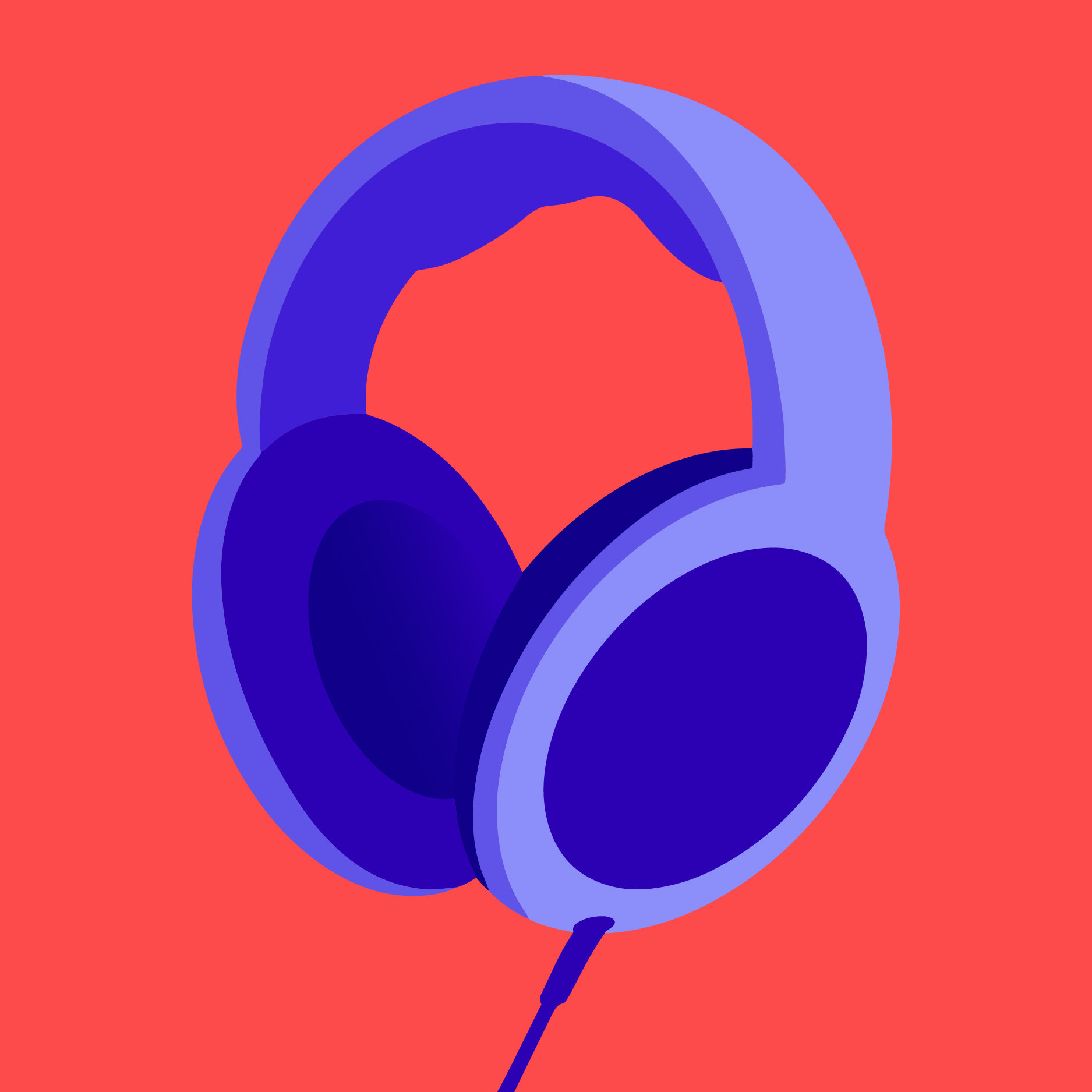
This type sits on top of your head and covers your ears entirely. They're great for blocking out external noise and have high sound quality. It's worth noting that they're the bulkiest type of headphones.
On-ear Headphones
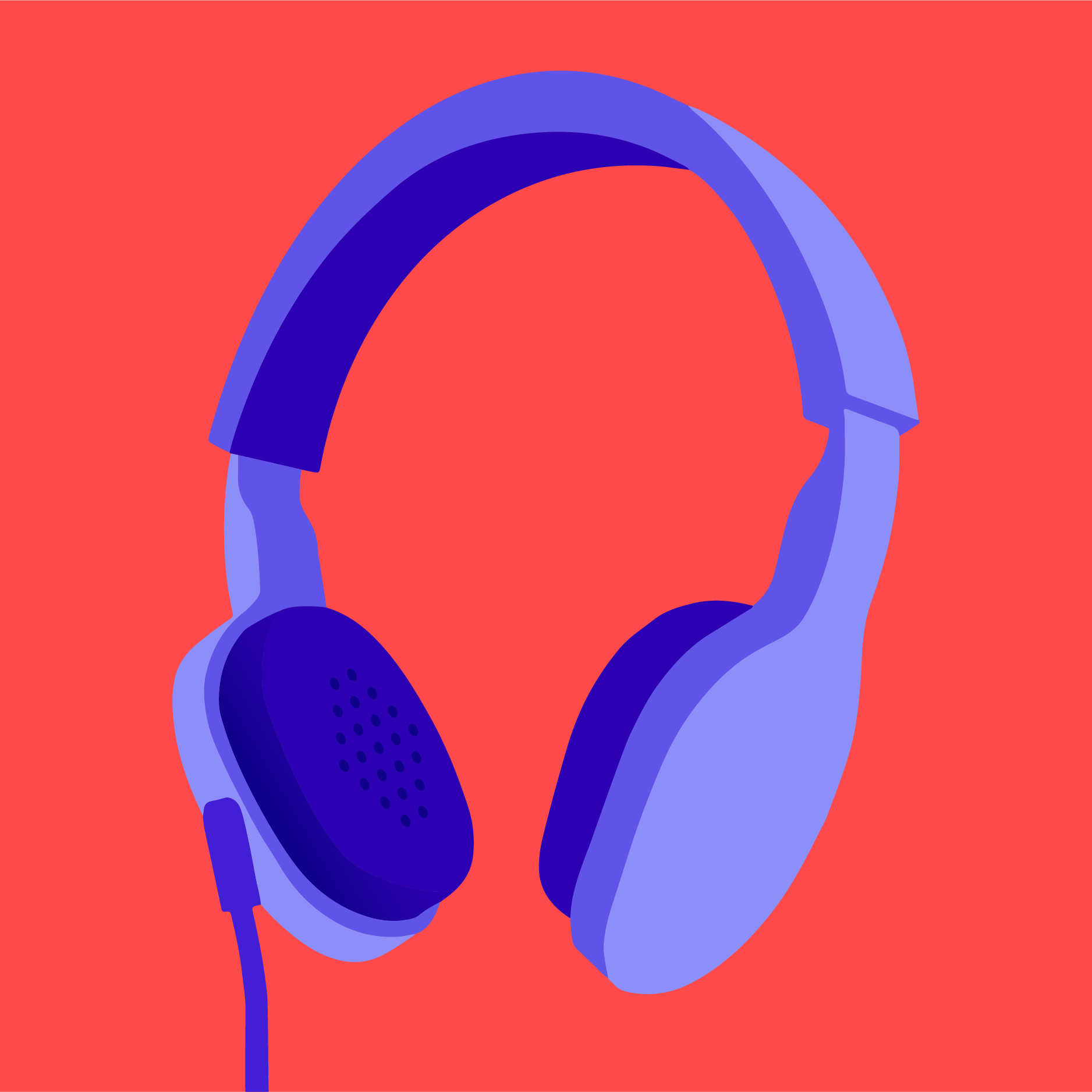
On-ear headphones are worn over your head, but they don't cup your ears completely, allowing external sounds to penetrate. Meanwhile, the sound emanating from the speakers can exit, so your partner might be able to hear your music or white noise.
In-ear Headphones
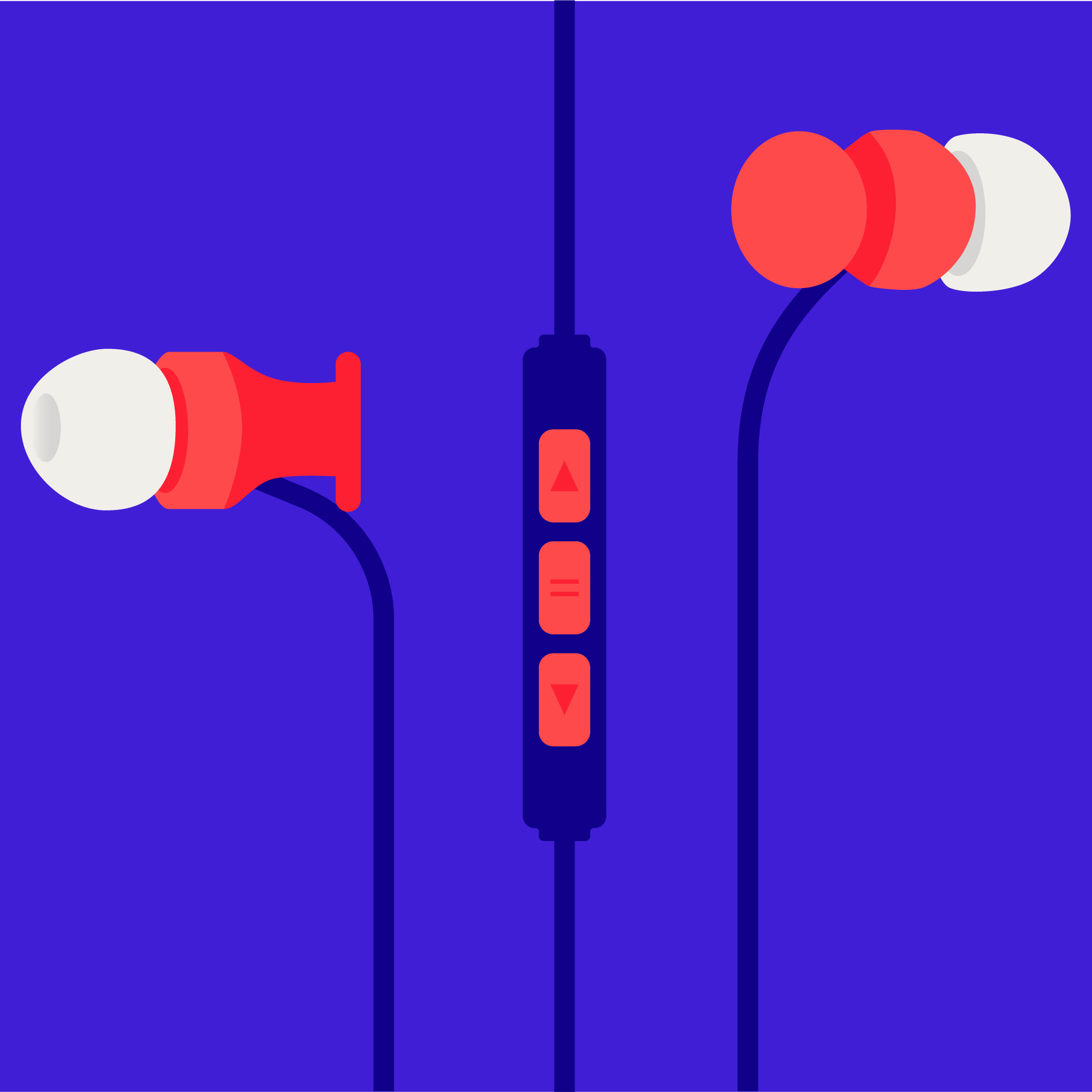
This type is lighter than over- and on-ear headphones because they're much smaller. They have speakers that fit inside the ear canal. They're sometimes wired and have a silicone ear tip. Sleeping with these is more comfortable than their bulkier counterparts.
Earbuds
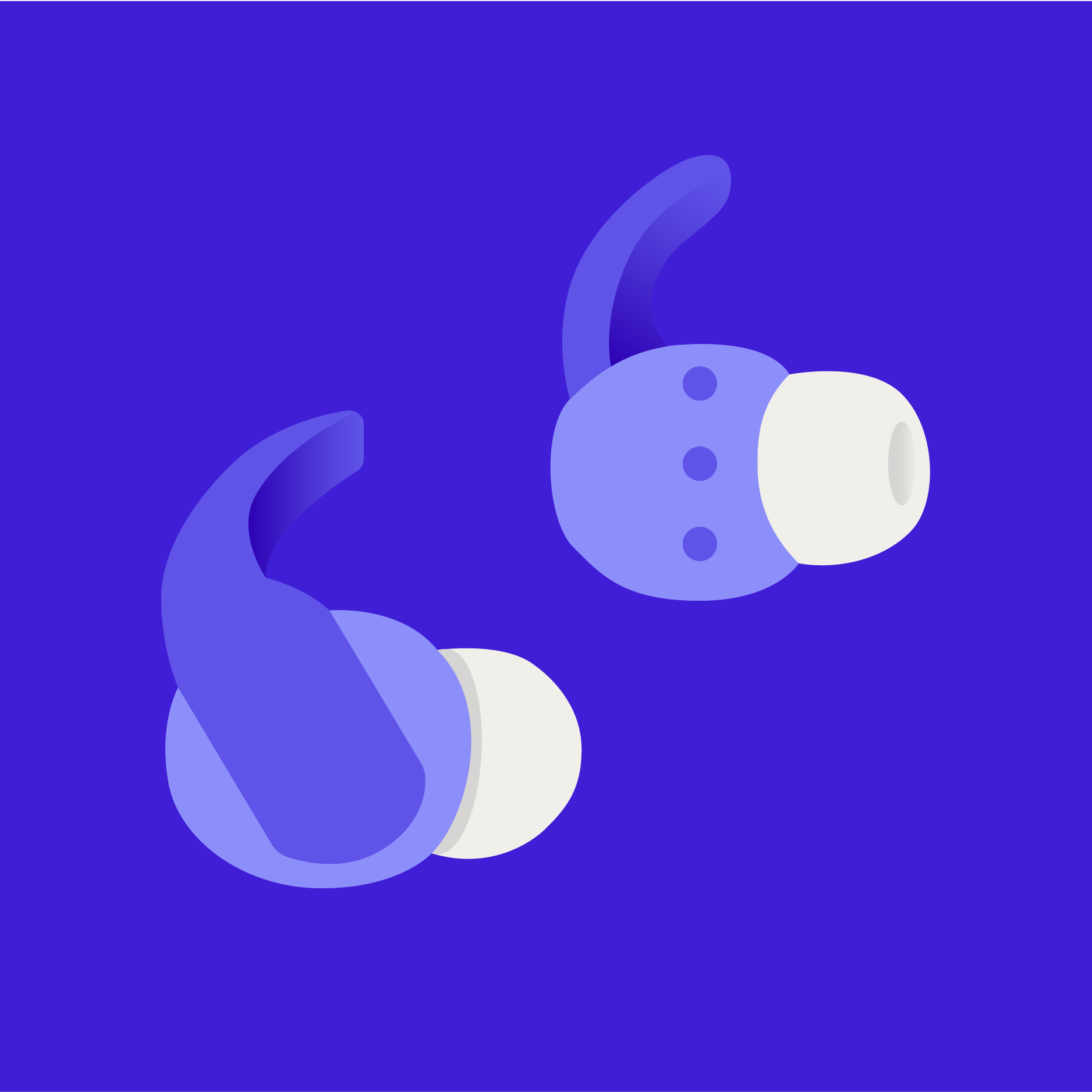
In recent years, earbuds have become more popular than in-ear headphones. Most earbuds rest on the outer ear instead of inside the ear canal. There are wireless versions, too. However, they don't do a great job of blocking out external noise.
Headband Headphones
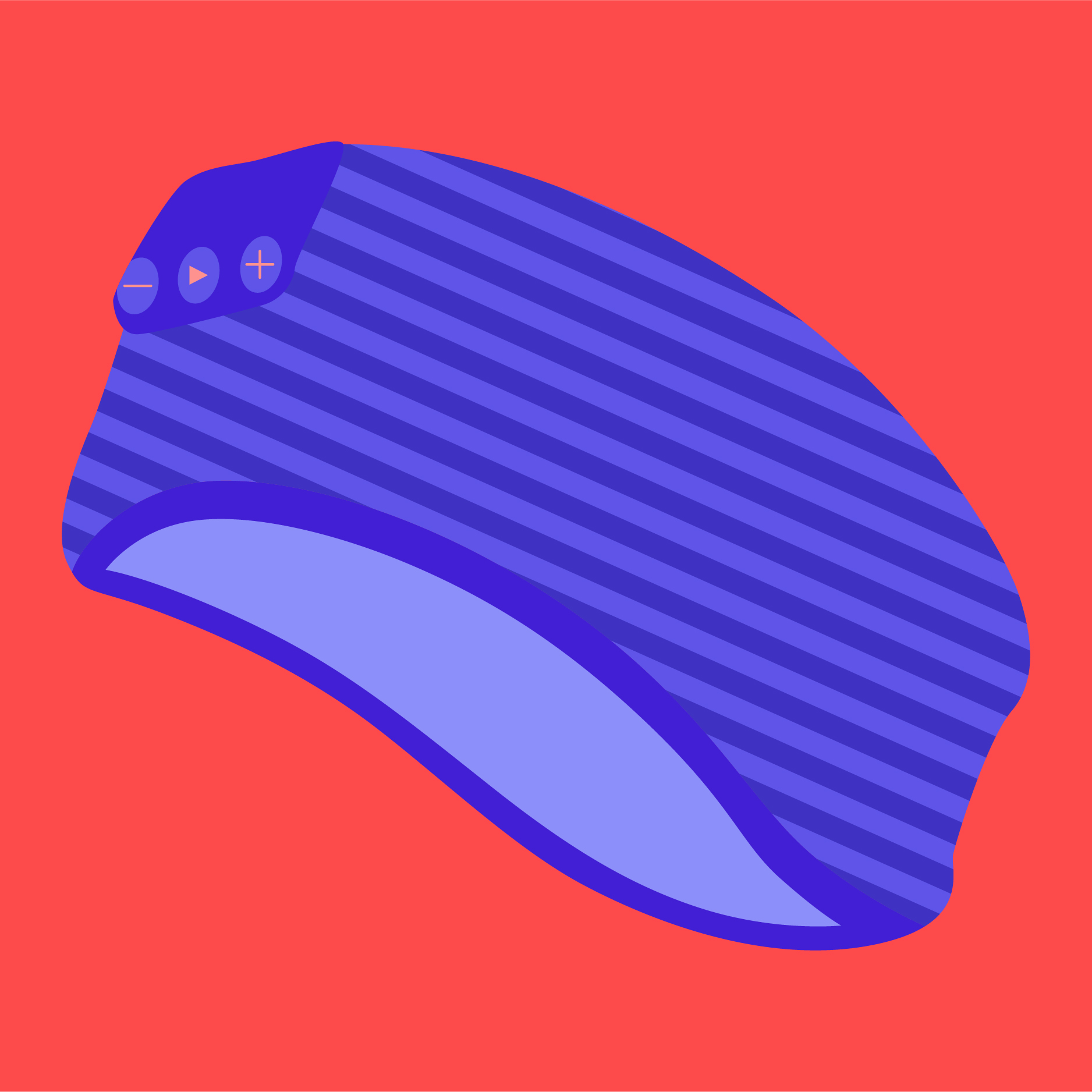
This type gets an A+ for comfort. They're made from soft elastic fabric and go around the head. The band's interior holds the speakers so they don't enter your ears.
Among all the kinds of headphones mentioned here, these are one of the most comfortable.
Wearing Headphones While Sleeping: The Risks
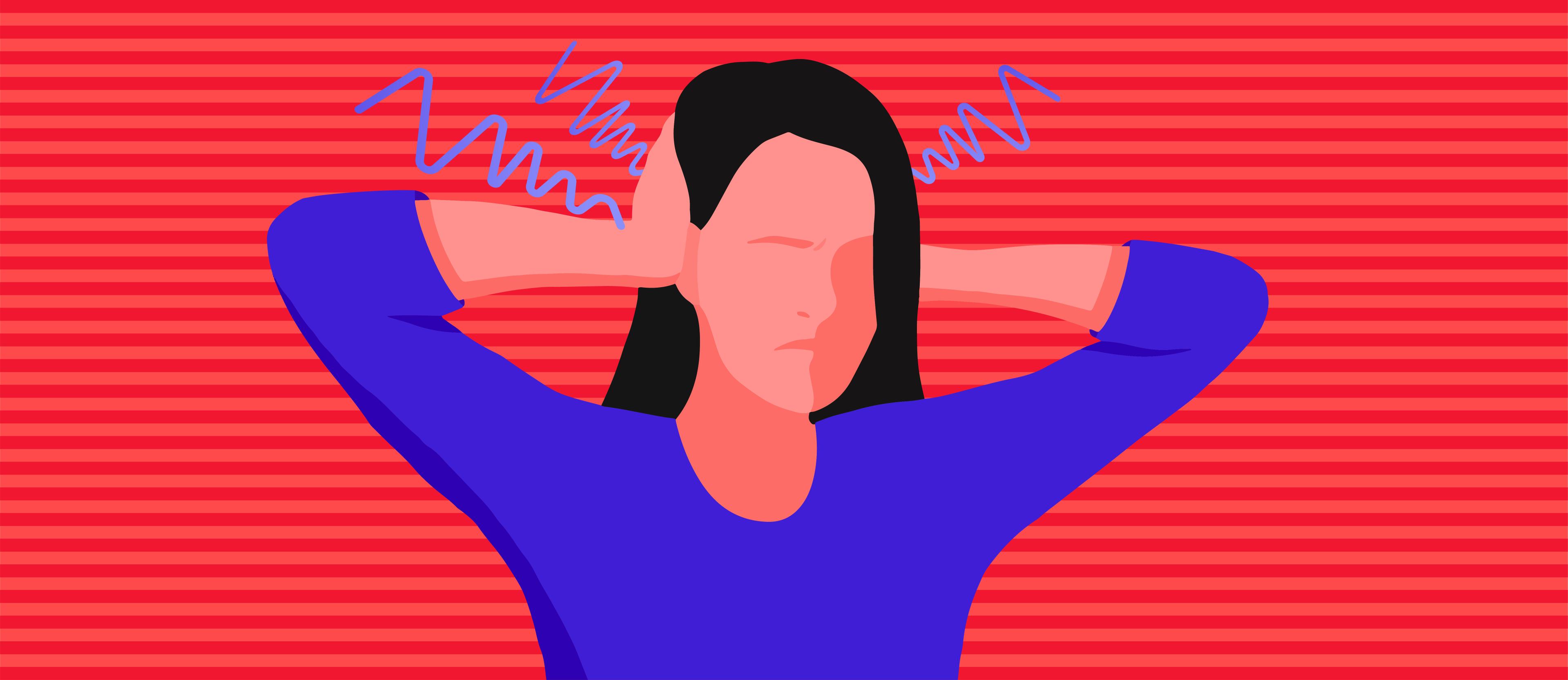
It wouldn't be right for us to claim that wearing headphones isn't all bad because there are some risks. And knowing what these are will help you use headphones smarter and safer.
Let's get started.
Sleep Discomfort
Headphones can cause discomfort during sleep, especially bulkier ones. While it's possible to sleep on your back with wireless headphones, we can't vouch for comfort. You'll likely need to invest in a pillow designed for sleeping with headphones or a travel pillow. If you're a side sleeper, you'll have a rough time.
Headband-style headphones are a better option because the speakers don't go inside your ears. If you rely on sound to help you get a good night's slumber, it makes more sense to use sleeping headphones.
Ear Infections
In-ear headphones or earbuds block air from circulating in your ears, leading to earwax buildup and moisture in your ear canal. These headphones create an ideal environment for bacteria to thrive, leading to infections like swimmer's ear.
Clean your devices and take a break from them for a couple of hours after use to give your ears time to dry out.
If you are a fan of earbuds, you might also want to learn is it safe to sleep with earbuds.
Impaired Hearing
Whatever type of headphones you use, listening to sound that's over 85 decibels for prolonged periods can cause hearing damage. According to the National Institute on Deafness and Other Communication Disorders, sounds measuring 70 decibels or below are unlikely to cause hearing loss even after prolonged exposure.(1) So, the lower, the better.
Tinnitus
Tinnitus is a ringing sound that only you can hear. Some people listen to brown or white noise for tinnitus relief.
Regularly exposing yourself to loud noise can lead to tinnitus. It's like a temporary ringing in your ears after watching a live concert. Imagine listening to loud music all night long on your headphones.
If you're using headphones to sleep, keep them at a low volume. You might want to reduce it by half (or more) of the maximum level.
Safety Hazard
Sleeping with wired headphones puts you at risk for strangulation, so go wireless with a Bluetooth® alternative.
Noise-cancelling headphones are great when you're wide awake and aware of your surroundings. However, using a noise-cancelling device while sleeping poses a safety risk. It'll be harder for you to wake up in case of danger. You might not hear the sounds of a break-in or your smoke alarm.
Necrosis
According to the Cleveland Clinic, necrosis is when tissue cells die due to a lack of blood flow.(2) The result? Black or brown lesions, which may lead to hearing loss, and in severe cases, amputation.
Headphones that you put inside your ears put pressure on your ear canal, making it harder for your blood to circulate.
Realistically, necrosis is rare, and it takes some time for it to develop. Regardless, it's best practice to be careful when wearing any kind of headphones.
How to Sleep Comfortably With Headphones
Here are some tips to sleep comfortably and safely with headphones:
-
The supine sleep position results in the least amount of pressure on your ears and head from the headphones. Sleeping on your back is a posture that's least likely to interfere with sound delivery and device settings.
-
Use a pillow designed for sleeping with headphones. These pillows feature holes on either side (or one in the center) for your headphones.
-
If you must use earbuds, make sure they're a good fit. They should fit snugly without being pushed too deeply into the ear canal.
-
Clean your headphones regularly to prevent the growth of bacteria and earwax buildup.
-
Keep the volume level low to prevent noise-induced hearing loss.
The most comfortable and safest option is headphones specifically designed for sleeping.
The Best Option: A Sleep Mask With Headphones
So, what's a sleep mask with headphones? It's similar to headband headphones because it's made from fabric that wraps around your head.
The speakers are also within the interior of the mask. However, a sleep mask with headphones serves a dual purpose: to deliver sound and block out all light for deep sleep.
An advantage of a sleep mask with headphones is that they don't go into your ears, making it a more sanitary option and unbeatable in terms of comfort.
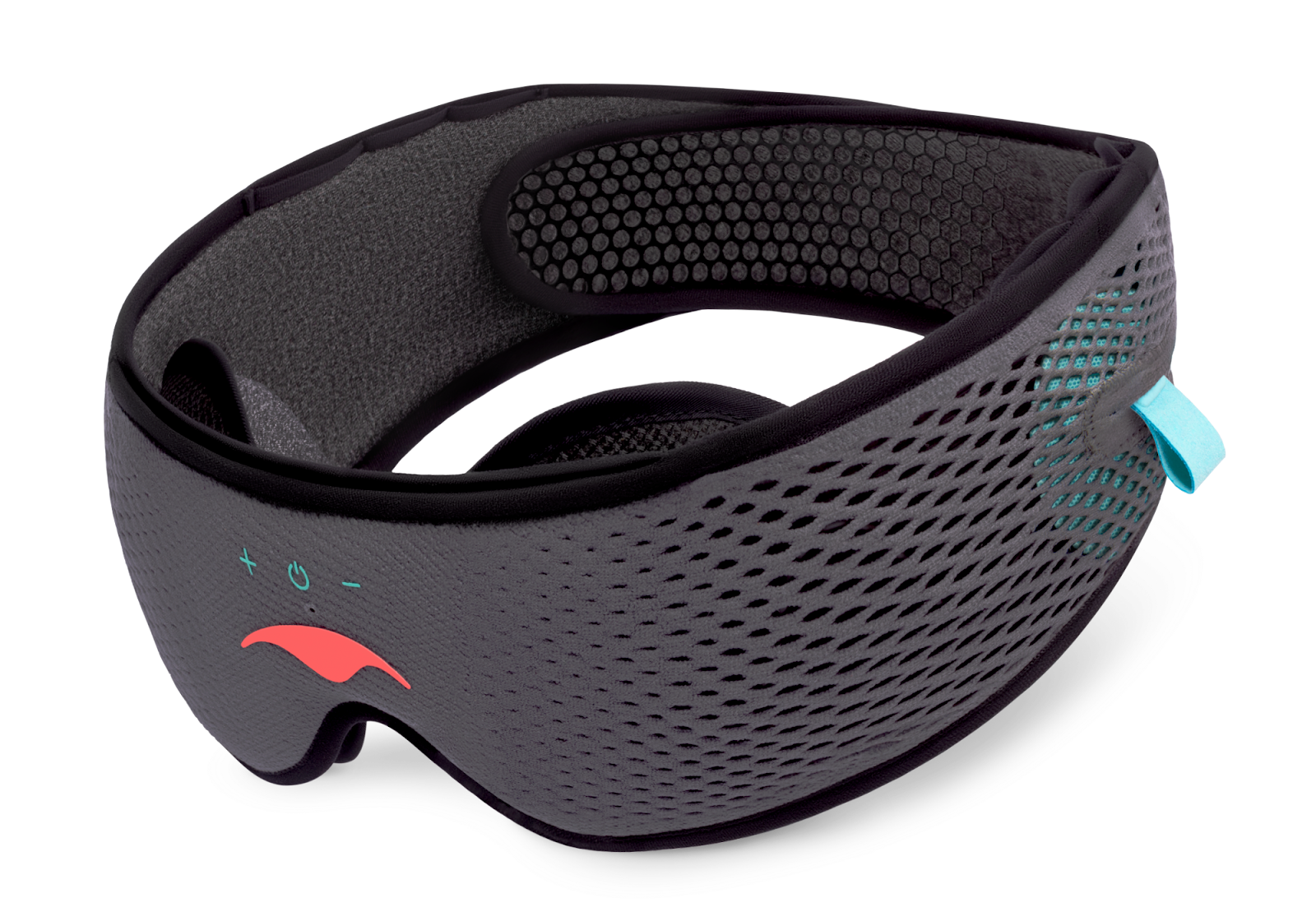
Let us introduce the NEW Manta SOUND Sleep Mask. It's an improved version of our SOUND Mask (Previous Gen), which, by the way, is still a reliable option.
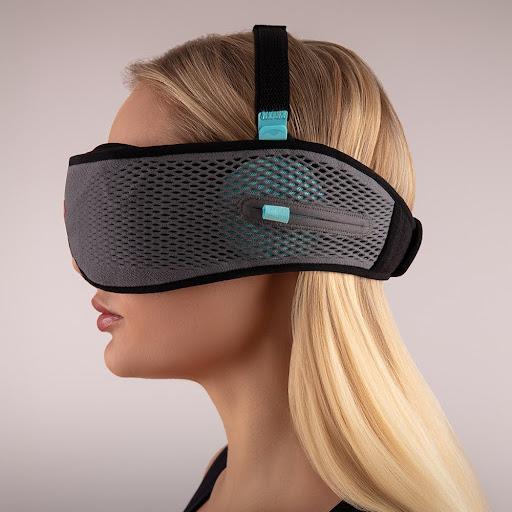
The stretchy and comfortable head strap has a 3D knitted mesh design, making it ultra breathable.
It's infinitely adjustable, securing around the head with a micro hook-and-loop closure. The strap sits under the base of the skull to prevent it from moving upwards or downwards during sleep. An optional (and adjustable) top strap provides an extra secure fit.
It's also the best sleep mask with headphones for side sleepers out there, but it works for other sleep positions, too.
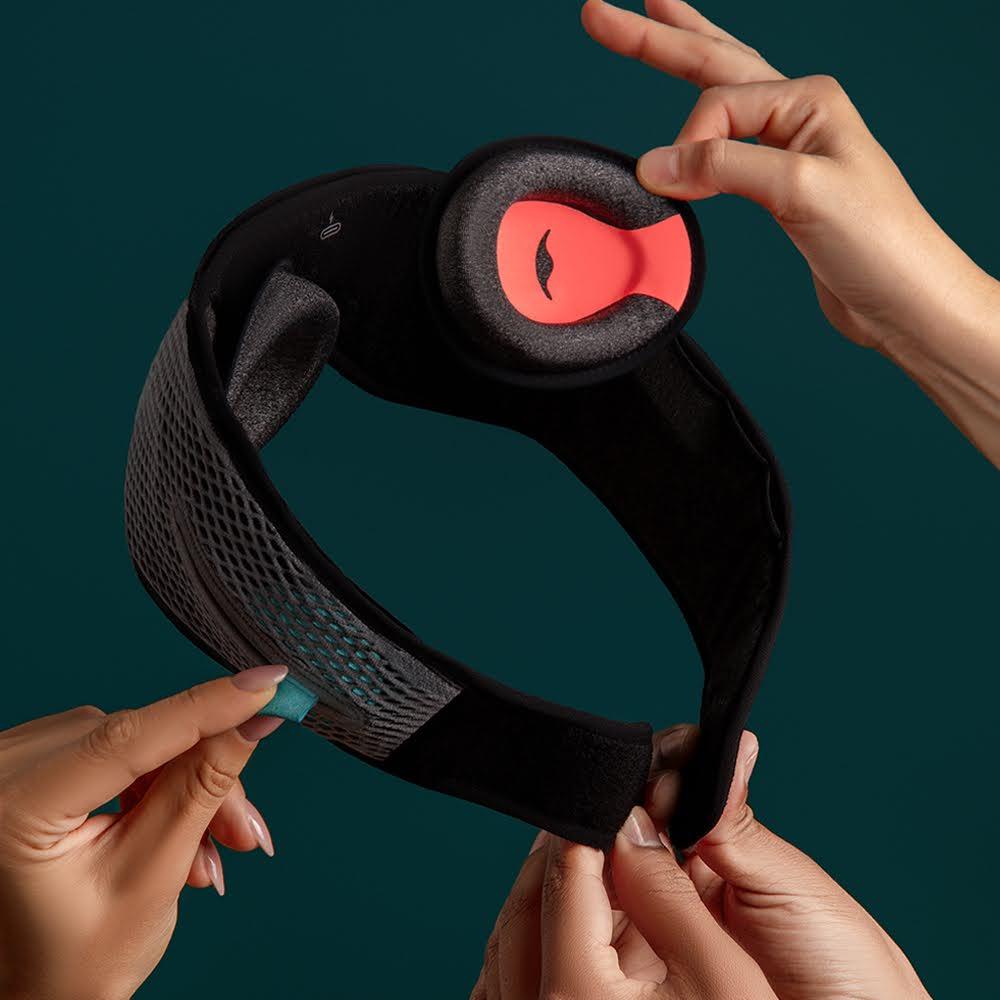
Its C-shaped eye cups flatten at your temples. Each one has a smart air bubble that expands when you switch sides, sealing out light. The cups are detachable. Position them anywhere within the interior of the mask for a custom fit.
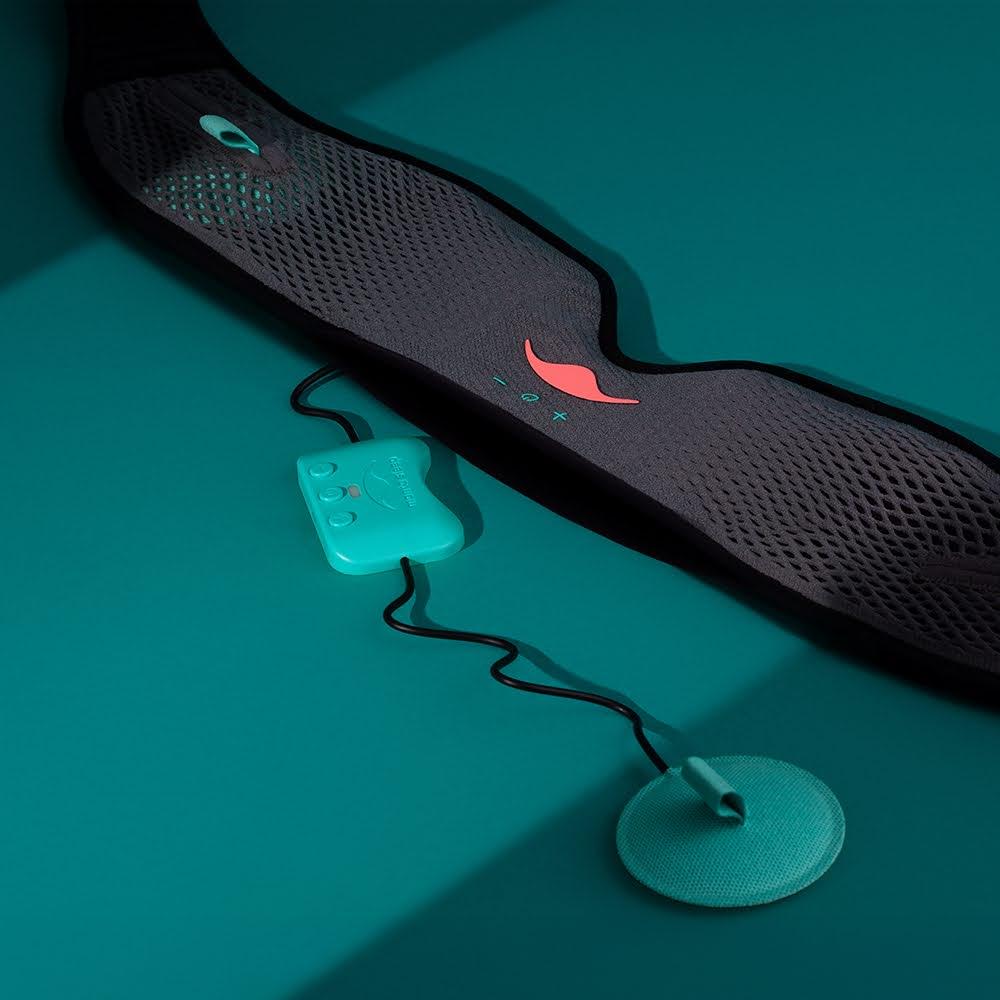
The NEW Manta SOUND Mask features ultra-thin speakers (4 mm) that deliver above-average sound quality compared to other masks on the market. The battery life is impressive: 24 hours at full volume and 30 hours at half volume.
It also has removable electronics for easy cleaning. Pull the speakers out from the openings at the top of the head strap. Both the head strap and eye cups are machine washable in cold water.
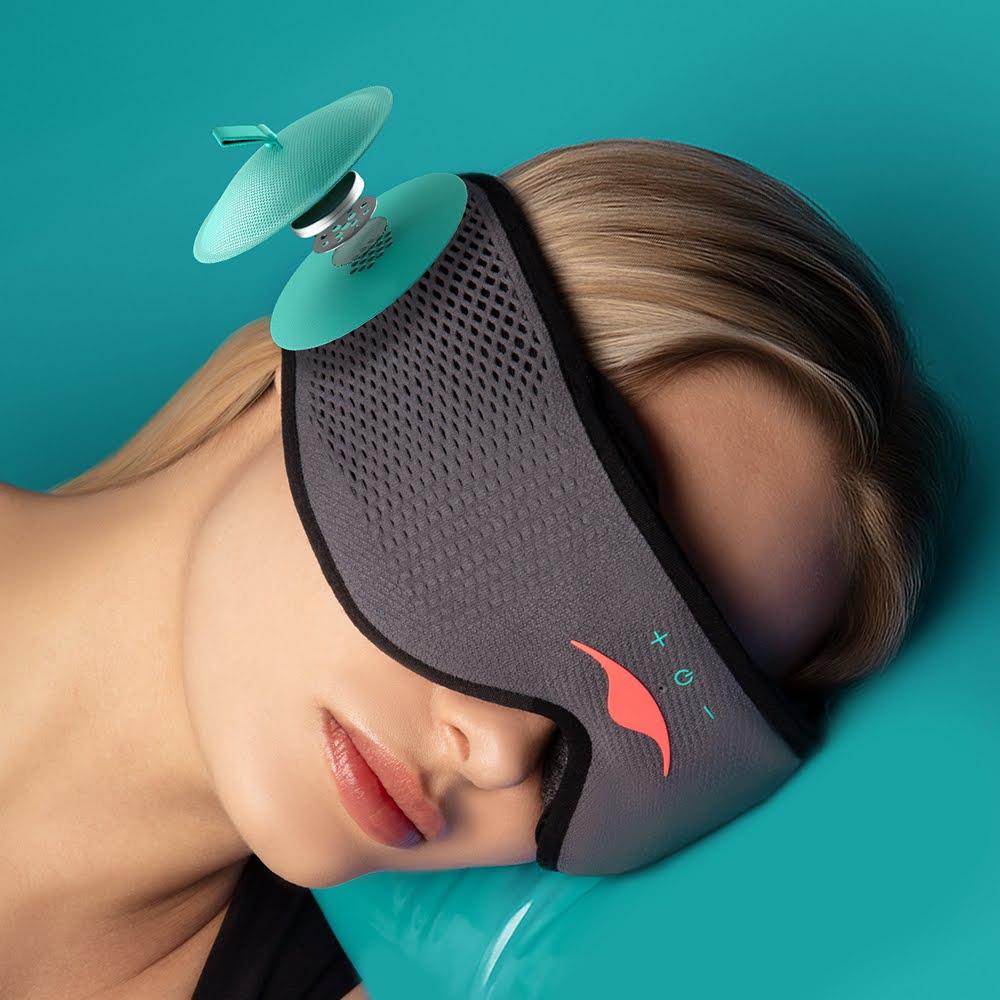
They're also adjustable for better sound delivery. Pull on the tabs outside to your preferred position.
The volume and power buttons are on the front of the mask. There's no need to remove it to adjust the volume or turn it off. Pair it with any Bluetooth®-compatible device.
We don't call it the best Bluetooth® sleep mask in existence for nothing.
To close, is it bad to wear headphones to sleep? The answer is no, provided you take the necessary precautions. Using a sleep mask with headphones is the smarter and safer alternative.
Frequently Asked Questions About Sleeping With Headphones
Is It Safe to Sleep With Headphones All Night?
It is relatively safe to sleep with headphones all night, provided that you take the necessary precautions, because there are some risks, such as impaired hearing over time. Keep the volume down and use headphones that don't go inside your ears.
Is It Safe to Sleep With Headphones Every Night?
It's relatively safe to sleep with headphones every night as long as you take the necessary precautions. These include keeping the volume low and using a headband or sleep mask with headphones.
Can Sleeping With Headphones Damage Your Hearing?
Yes, sleeping with headphones may damage your hearing if you listen to sounds at over 70 decibels for prolonged periods.
Can Sleeping With Headphones Cause Ear Infections?
Sleeping with in-ear headphones or earbuds can cause ear infections because they can cause earwax buildup and promote bacterial growth. Regardless of the type of headphones, it's crucial to clean them regularly.
What Kind of Headphones Are Best for Sleeping?
The best kind of headphones are designed specifically for sleep, especially those that double as a sleep mask. The speakers should be worn over the ears instead of inside them, such as Manta SOUND Mask (NEW Gen) or Manta SOUND Mask (Previous Gen).
What Volume Should I Set on My Headphones While Sleeping?
A safe volume is 70 decibels or below. The lower, the better.
Can Sleeping With Headphones Block Out Snoring?
Yes, noise-cancelling headphones can block out snoring. However, they pose a safety risk by also blocking out emergency alarms. Use a sleep mask with headphones that doesn't have a noise cancellation feature. While it won't completely block out snoring, it can mask the disruptive noise without the risks.
Why Do People Sleep With Headphones?
People sleep with headphones to ease anxiety and stress and to fall asleep faster and easier. (Think of it as a pre-bedtime routine to relax you for better sleep.)
Listening to white noise on headphones can also mask disruptive environmental sounds. In some cases, listening to white or brown noise can also help mask the ringing from tinnitus.
Sources:
(1) “Noise-Induced Hearing Loss.” National Institute of Deafness and Other Communication Disorders, www.nidcd.nih.gov/health/noise-induced-hearing-loss. Accessed 29 July 2025.
(2) “Necrosis.” Cleveland Clinic, my.clevelandclinic.org/health/diseases/23959-necrosis. Accessed 29 July 2025.
Disclaimer: The information contained in this website or provided through our blog, e-mails, or programs is for informational purposes only. It is not intended to be a substitute for medical advice, diagnosis or treatment that can be provided by your healthcare professionals.












































